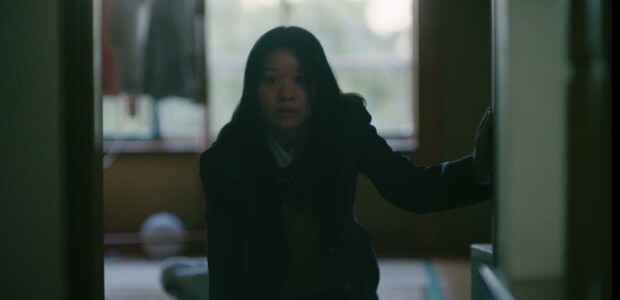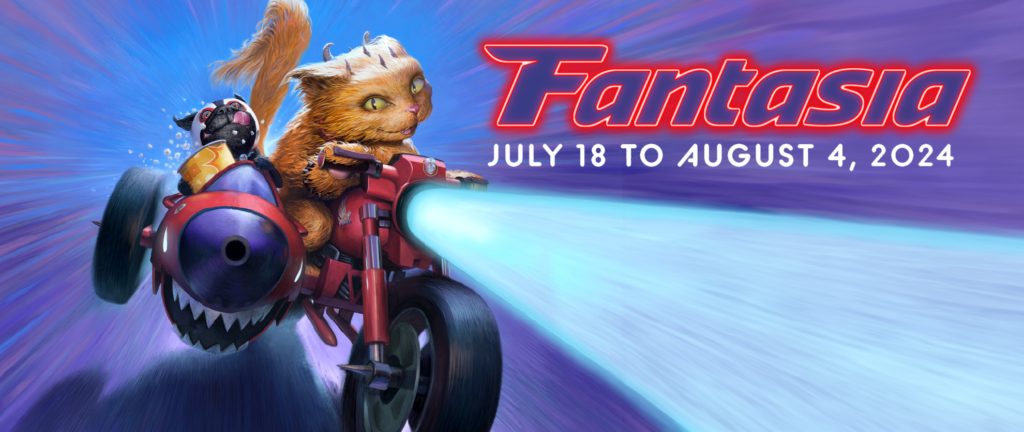Perhaps best known in the states for his found footage haunter, NOROI: THE CURSE, prolific filmmaker Kôji Shiraishi has returned with a different kind of ghost story in HOUSE OF SAYURI. Having just played at the Fantasia Film Festival, Shiraishi’s latest is the very definition of a mixed bag, beginning as a traditional yet effective J-horror ghost story before suddenly switching gears and leaning all the way into the director’s more humorous tendencies in an effort to breathe new life into a subgenre often choked by nihilism. The tones mix about as well as soda and pop rocks, making for an explosive yet jarring experience.
Based on a manga by Rensuke Oshikiri, HOUSE OF SAYURI introduces us to teenager, Norio (Ryoka Minamide) and his family of seven, who have just moved into an old house on the countryside. It was meant to be their dream home, but within hours, they find themselves under attack by a malevolent spirit. Tired of the torment, grandmother Harue (Toshie Negishi) snaps out of her dementia and devises a plan to rid themselves of the ghost, one that will take overcoming fear and a whole lot of tai chi.

Set in a house that oozes JU-ON vibes, HOUSE OF SAYURI packs in every J-horror ghost trope like a box of flavored chocolates. A family that has just moved into an old home with a dark secret. A long-haired ghost girl in a white dress seeking vengeance. A psychic/potential love interest, Nao (Hana Kondo), who informs Norio of the danger creeping towards his family. Various visions of the past. All of it feels conventional yet never dull thanks to Shiraishi’s patient craftsmanship. Creeping camera movements and deliberate framing establish a visual tension that pairs with a skin-crawling sound design to set the audience on edge before hitting them again and again with gasp-inducing scares. One unforgettable moment puts a terrifying twist on the iconic child running down a hallway fright from Mario Bava’s SHOCK. Throughout the first half, the filmmaker revels in the familiar while presenting a dark story that isn’t afraid to smash a few taboos. Unoriginal as it seems at first, it’s a scary as hell house of horrors… until it isn’t.
About halfway through, Grandma Harue snaps out of her dementia and becomes an ass-kicking, tai chi master. That should tell you all you need to know about just how jarring the tonal switch is. Shiraishi is no stranger to absurdist horror comedy (his SADAKO VS. KAYAKO mashup is insane), but the sudden turn here gives off a heavy dose of tonal whiplash. What starts as an average albeit frightening ghost story transforms into a surprisingly gory horror comedy with gross-out humor ranging from puking on heads to farting grandmas. Though not without reason. Shiraishi sets up a conventional J-horror haunter just so he can hammer familiar tropes to pieces and bring a little humor to a generally bleak subgenre where the protagonists don’t even have a chance. The change-up will likely turn some viewers off, but I can’t say it isn’t refreshing. Rather than present a formidable spirit that can’t be beaten such as in foundational classics like JU-ON or RINGU, the filmmaker attempts to offer a more hopeful message. We can take on anything, even ghosts, if we believe enough in ourselves and each other.
Shiraishi’s intent is welcome, yet a few unsavory factors weigh the film down. Featuring a murderous, obese ghost that swallows one of her victims whole and whose old room is shown covered in snack wrappers, I wouldn’t blame anyone for reading the film as fatphobic, especially after grandma starts spouting insults like “lazy” and “slob” at the spirit. Sayuri’s appearance is meant to distance her from the usual long-haired girl in a white dress associated with J-horror, but the treatment of the character leaves a bad taste on the tongue. The comedic antics don’t gel all that well either when put up against a rather uncomfortable story dealing in sensitive subject matter regarding child abuse. I appreciate that Shiraishi wants to dismantle the tropes often found in Japan’s ghost stories, but the execution here creates, at best, a confusing tone that undercuts emotional beats at every turn.
Effectively scary through the first half and a tonally clashing mess in the second, HOUSE OF SAYURI is like a halfway renovated home. Some rooms are new and clean and inviting, while others are filled with mold and paint peels off the walls. Shiraishi presents a traditional J-horror ghost story just so that he can break convention, for better and worse. It’s a tale of two halves that struggle to come together as a satisfying whole, yet made entertaining enough thanks to silly performances, over-the-top comedy and some memorable scares. If you must enter HOUSE OF SAYURI, do so with an open mind. This weird and wild and crass J-horror film will leave you utterly dumbfounded otherwise.
3/5
Tags: 2024 Fantasia International Film Festival, Fantasia 2024, Fusako Urabe, Ghosts, Hana Kondo, Horror, J-Horror, japan, Kitarô, Kôji Shiraishi, Kokoro Morita, manga, Mari Asato, Matt Konopka, Rensuke Oshikiri, Ryoka Minamide, Toshie Negishi, Zen Kajihara




No Comments